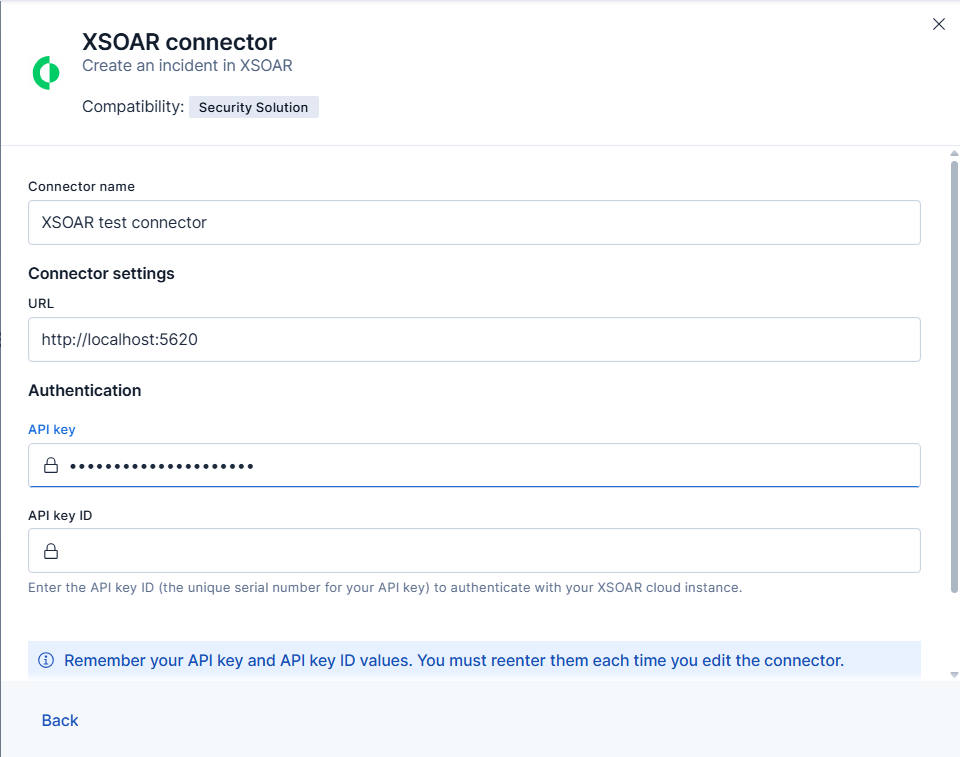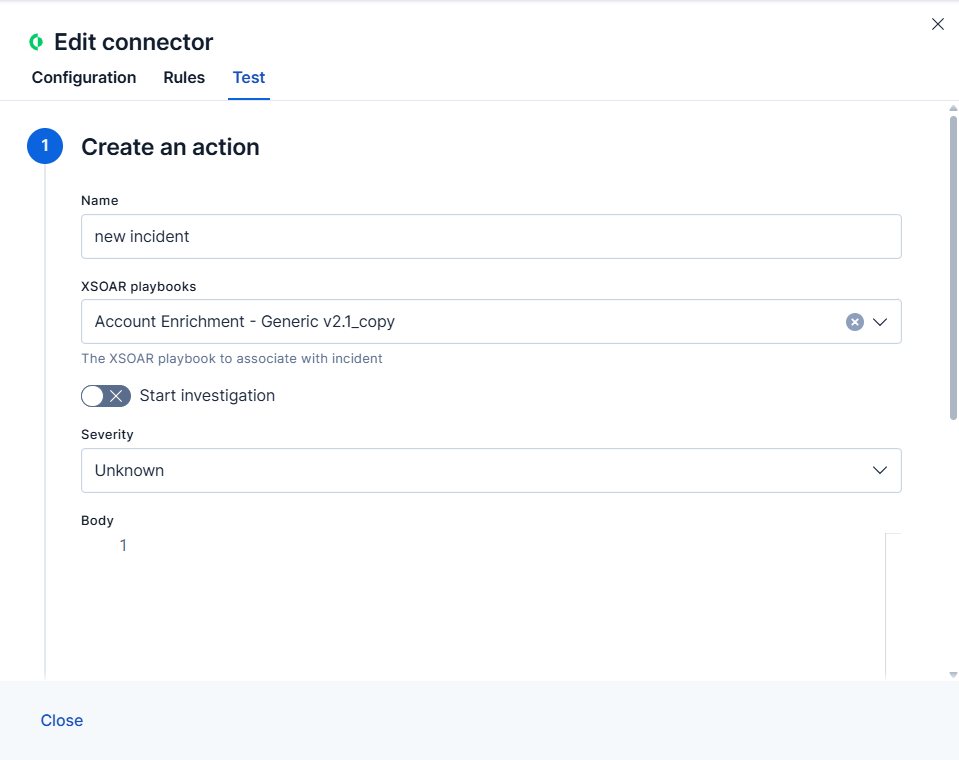XSOAR connector and action
Serverless Stack
XSOAR connector uses the XSOAR REST API to create Cortex XSOAR incidents.
You can create connectors in Stack Management > Connectors or as needed when you’re creating a rule. For example:

XSOAR connectors have the following configuration properties:
- Name
- The name of the connector.
- URL
- The XSOAR instance URL.
- API key
-
The XSOAR API key for authentication.
NoteIf you do not have an API key, refer to Create a new API key to make one for your XSOAR instance.
- API key id
- The XSOAR API key ID for authentication. (Mandatory for cloud instance users.)
You can test connectors as you’re creating or editing the connector in Kibana. For example:

XSOAR actions have the following configuration properties.
- Name
- The incident name.
- Playbook
- The playbook to associate with the incident.
- Start investigation
- If turned on, will automatically start the investigation process after the incident is created.
- Severity
-
The severity of the incident. Can be
Unknown,Informational,Low,Medium,HighorCritical.NoteTurn on
Keep severity from ruleto create an incident that inherits the rule's severity. - Body
-
A JSON payload that includes additional parameters to be included in the API request.
{ "details": "This is an example incident", "type": "Unclassified" }
Use the Action configuration settings to customize connector networking configurations, such as proxies, certificates, or TLS settings. You can set configurations that apply to all your connectors or use xpack.actions.customHostSettings to set per-host configurations.